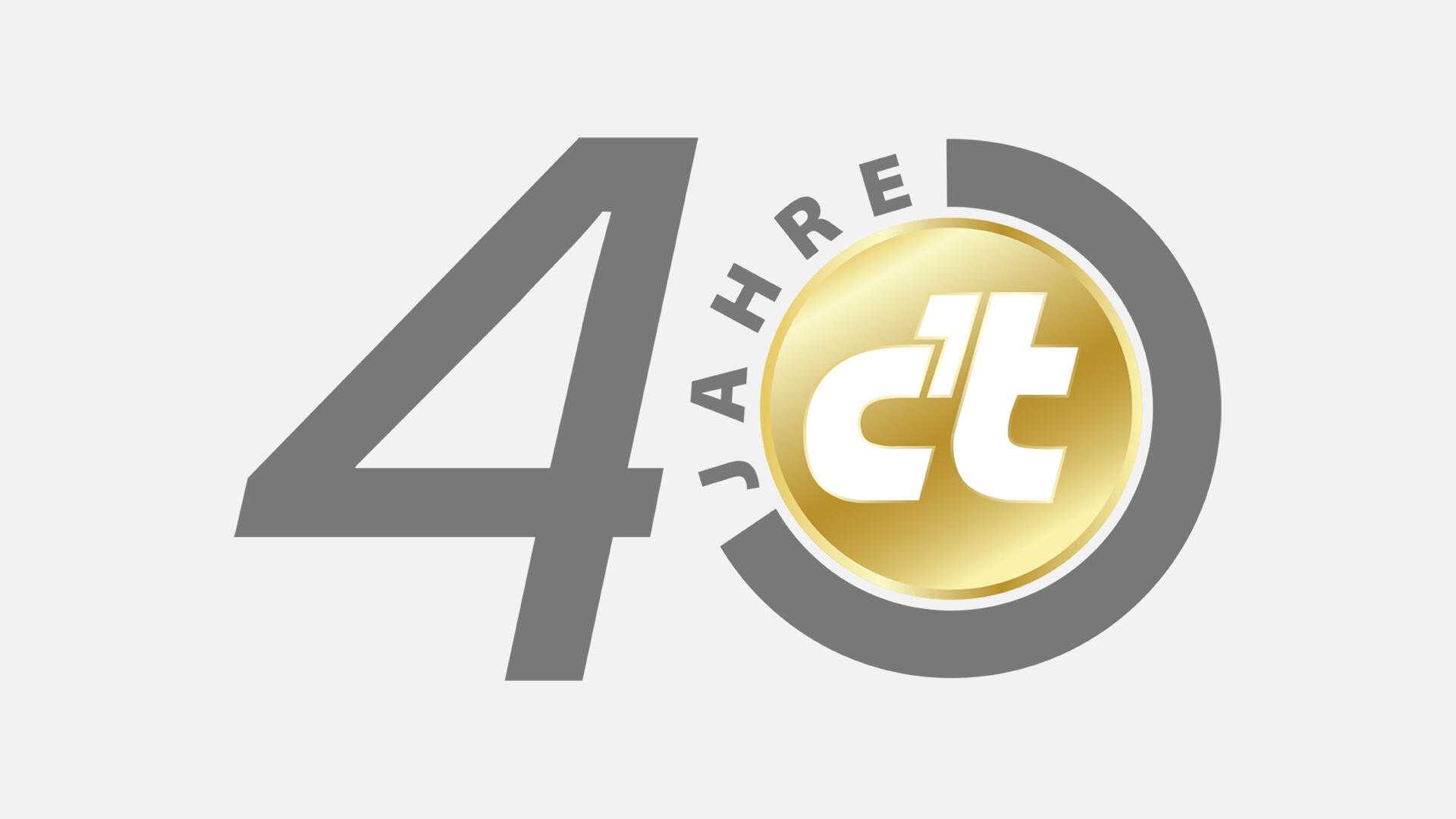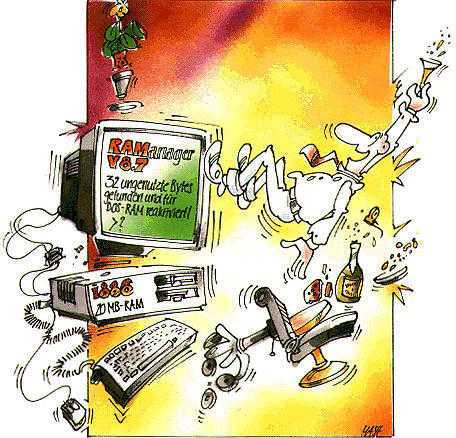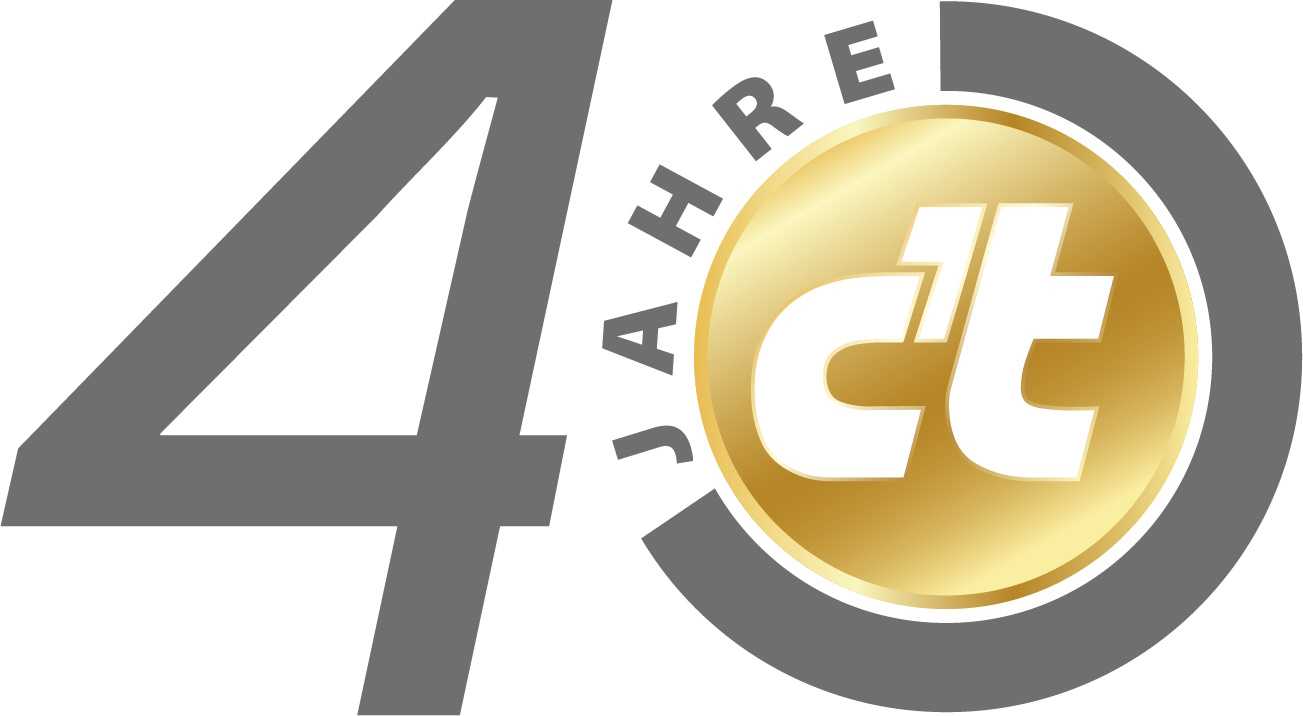
c’t magazin is celebrating its 40th birthday this year. We take this as an opportunity to pull some articles from our archive that are worth reading again. Among them are exciting investigative stories as well as oddities, great successes in computer technology, but also forecasts where we were completely wrong. We comment on the articles from today’s perspective and look forward to an entertaining journey through 40 years of IT history with you.
The first page in a magazine usually belongs to the editor-in-chief, who uses the exposed space in the magazine to refer to articles that he thinks are particularly worth reading. Most readers skip straight to the content. c’t editor-in-chief Christian Persson was probably also aware of this and left it out completely in most issues of the first two years.
That only changed in 1986 with the switch to the title layout that is still current today. Over the course of the year, the typical page 3 appearance of the c’t: Courier typewriter font and two columns with ragged typesetting became established. In issue 10/1986, she rounded off a drawing by our caricaturist “MASH” for the first time, which to this day provides the unmistakable introduction to every c’t.

Instead of boring article advertising, the editorial was about the sensitivities of the c’t editor, for example the daily struggle with spelling – even before the reform. Detlef Grell blasphemed:
“And above all, what does that have to do with the illogical rules of Mr. Duden? This chatter with the orthography just doesn’t make sense.”
The fact that soon every editor was allowed to access the editorial brought up new topics (and relieved the editor-in-chief). In 1986/87, the dispute between the fan factions of the Motorola 16-bit processor 68000 was popular, and Andreas Stiller caricatured it:
“Apparently the rivalry between Commodore, Atari and Apple is rubbing off on users, some of whom now support their club with the rationality of football fans. So 1. FC Commodore Munich against… (Tip for Atari boss Tramiel: hire Werder Bremen).”
From 1989, the increasing frustration of MS-DOS users over Microsoft’s bungling with the 32-bit x86 systems at the time developed into a popular editorial topic. Detlef Grell wrote in 1990:
“Oho! There we have the expanded memory, the great RAM disks and hard disk caches. And the magnificent DOS extenders: huge RAM-guzzling applications are possible under DOS. Or the 80386 capabilities: you can use several virtual ones at the same time 8088 environments…; uh, well…”

!ct 5/1990_s3 possibly only for online!!! A lot of tinkering was required to provide enough memory for MS-DOS applications, because sometimes every byte counted.
“Solutions for home use, which the monopoly owner (Microsoft) has always known how to use in its own application programs, but has withheld from the public of software creators to this day. That’s how you get market shares.”

In the 1990s, Microsoft’s DOS/Windows operating system could not keep up with the development of hardware. MASH’s caricature of the shaky system architecture hit the mark.
Interestingly, the peers moaning about Microsoft’s MS-DOS tinkering pointed to the originator of the PC: IBM and its multitasking OS/2 operating system, which had no real-mode limitations. As is so often the case, the best solution did not prevail. Microsoft stuck to the outdated DOS substructure until Windows 98 and only poured a new foundation for Windows NT.
In terms of style, the authors of the editorial – today it is more appropriately called “point of view” – have always had a free hand. So there were scenic dialogues or Bert Ungerer’s warning from the fictitious central register for federal highway offenses:
“(…) the Digifonat you conducted today from 1:40 p.m. CEST constitutes an offense against the data flow rules on the federal highway. (…) Upon receipt of this message, your account was debited with the following items: 1. Attempted decryption in the event of suspected use of an illegal cryptographic method: 450 ECU 2. Voice analysis to determine identity: 130 ECU 3. Search for seditious keywords: 75 ECU”
The punchline that he had accidentally used his wife’s ID card and emailed an X-ray instead of the tax return was handwritten next to the warning from the invented authority ZVBDB, which Ungerer had appropriately located in Flensburg – the then Minister of the Interior, Kanther, would have liked that.
Also popular were glosses in the form of personal diary entries, such as those by Axel Kossel, which described the impact of the game of Doom on productivity:
“May 17th. I’m unemployed. Anna is mad. She found the bill for the full version.”

The success of the first-person shooter Doom in the 1990s slows down productivity and infuriates bosses. The impact of computer trends on society is a perennial favorite in c’t editorials.
Some of the old editorials turn out to be strikingly prophetic in hindsight, like Maria Benning’s from 2000. She explains how to spot ducks on the internet and even cook them up in the rumor mill: all you need are some incoherent numbers – preferably percentages – mixed together and the internet study is complete:
“79 percent of Americans believe in the existence of world war-triggering computer viruses, but only 20 percent of the world war-triggering viruses believe in the existence of Americans. (…) So everyone substantiates the behavior they want with numbers in order to increase the pressure to adapt more and more questionable statements.”
The evidence of false statements with nonsensical statistics is not a new trend (greetings from the Flying Spaghetti Monster), but the topic is more topical than ever. The current designation of the dishes from the Internet rumor mill in Maria Benning’s piece is also prophetic: Fake News. The cited editorials can be found under the links below for further reading.

Freshly prepared from the rumor mill: the term “fake news” wasn’t widespread in 2000, but the ingredients and the recipes for it were already around back then.
Editorials from 40 years of c’t:

(Bild: c’t 11/2023 )
Two-factor authentication protects your online accounts better than a password alone, but the hackers are stepping up! We show how cybercriminals bypass 2-factor protection and how to protect yourself. We also tested five e-bikes for smart commuting. Find out which city runabout suits you. As a PC build proposal we have an audio workstation on offer, we programmed with ChatGPT and looked at the Mullvad browser with privacy protection. In our 40 years c’t special we look back on the famous page three in c’t. You can read that and more in c’t 11/2023.
(rop)

